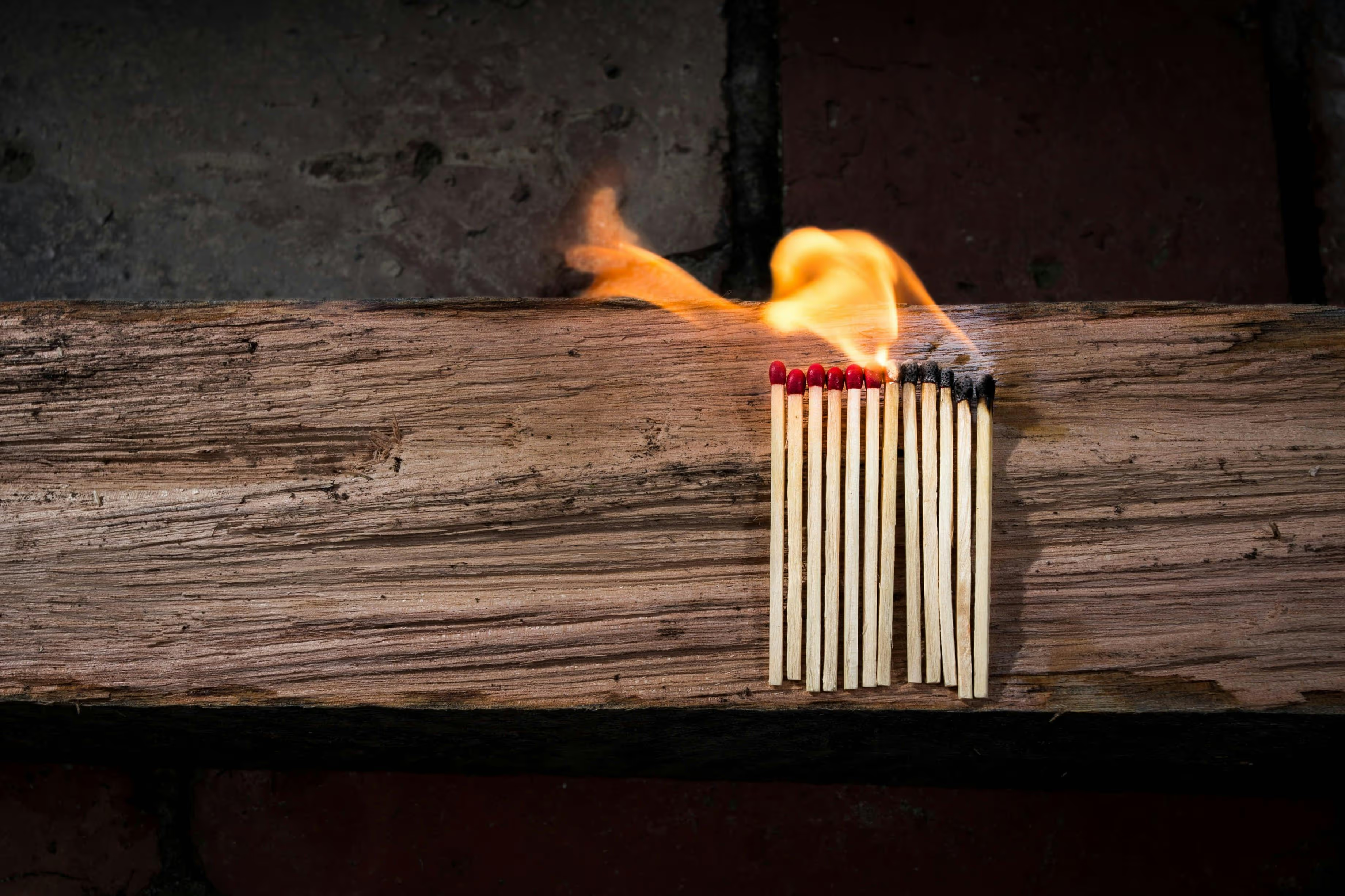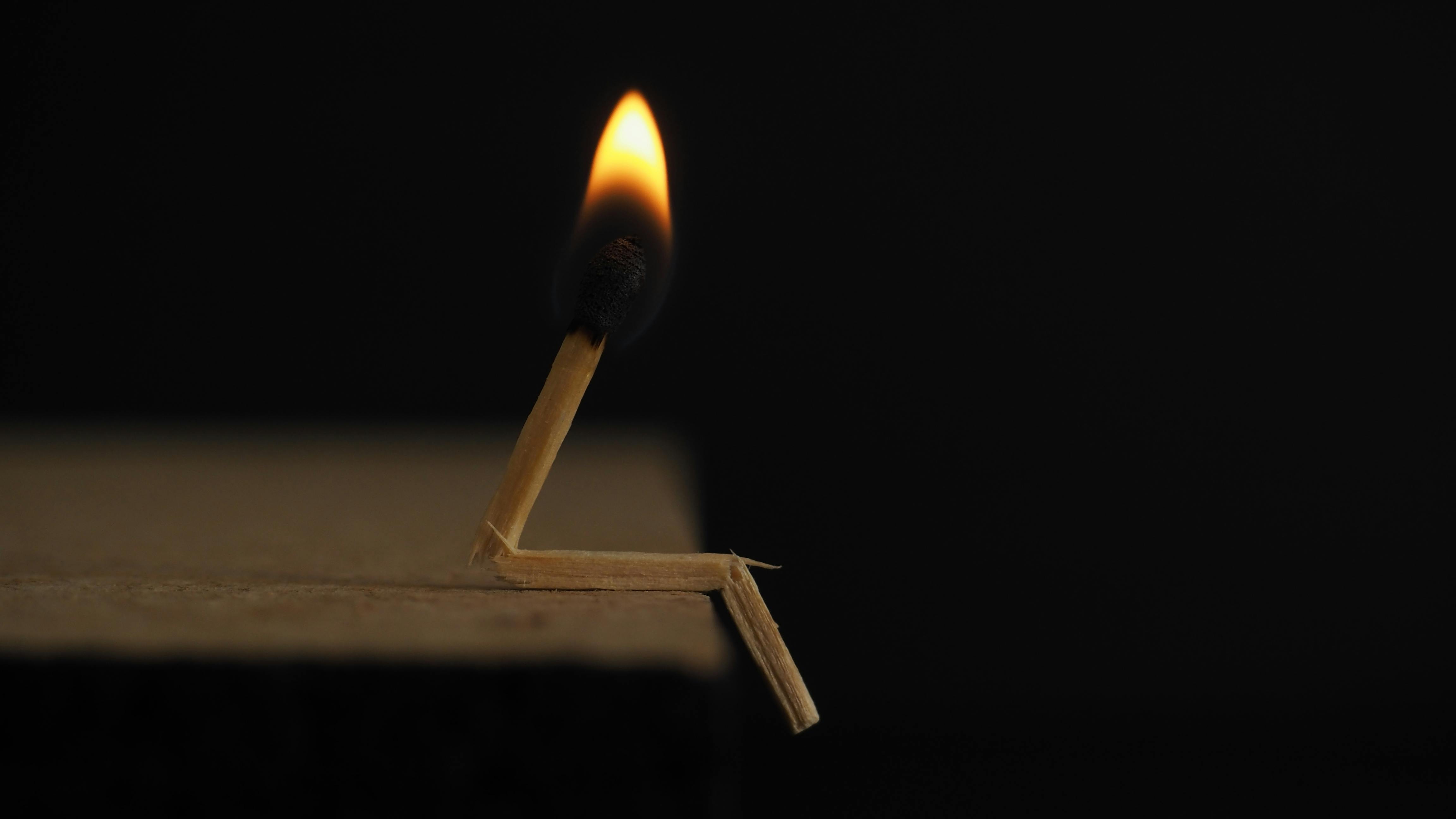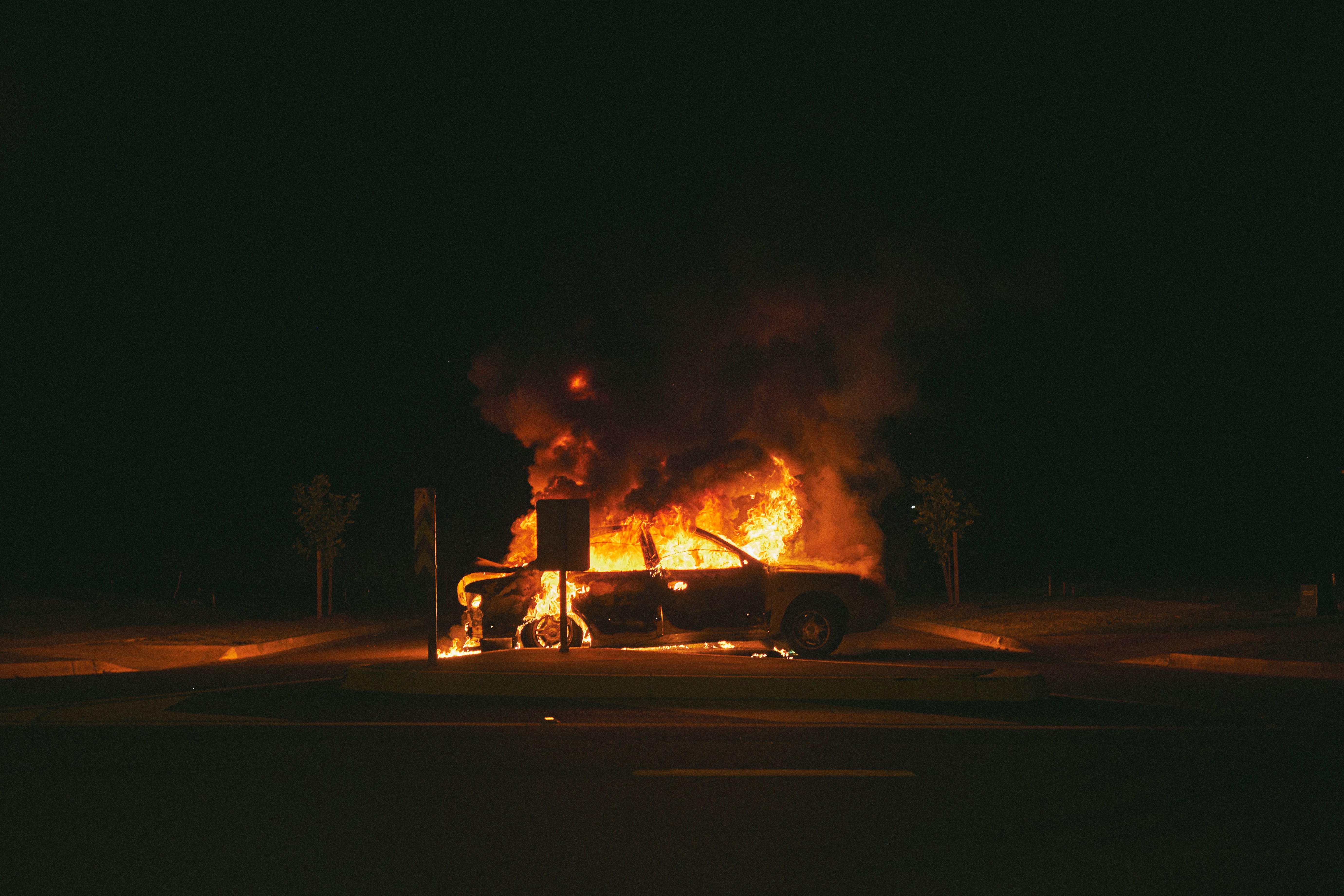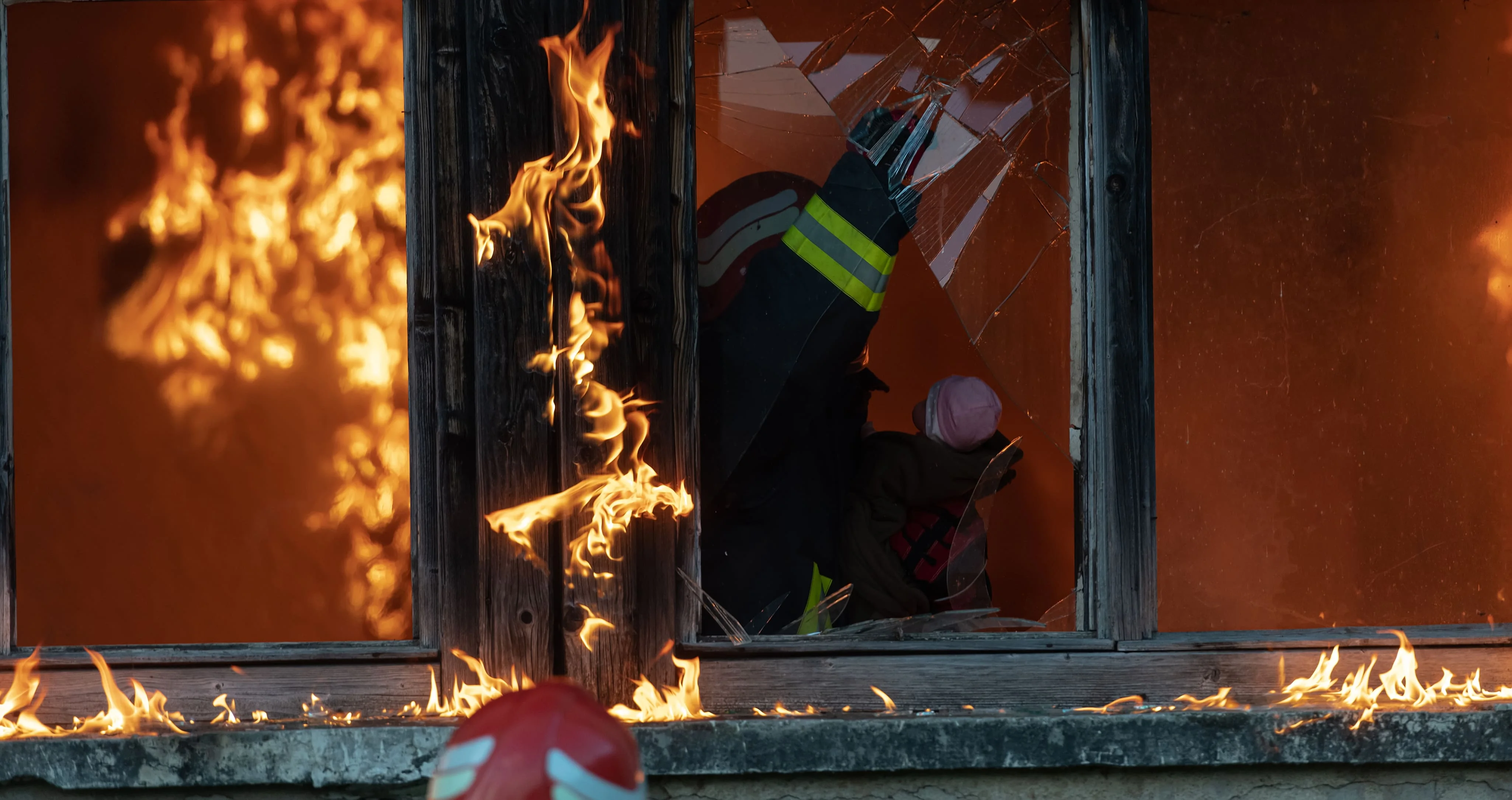Flammability Testing Explained

.jpeg)
Do you recall that moment when you "unintentionally" ignited your science fair volcano project using baking soda and vinegar? (No need to fret; we've all experienced similar mishaps.) Fortunately, the majority of things in our everyday lives - like your beloved shirt or the cozy couch you sink into after a long day - don't suddenly burst into flames.
That’s why it’s important to check how quickly things can catch fire. Scientists do flammability testing by putting flammable materials near flames and high temperatures to see how they react. This type of study gives us a better understanding of how a material behaves during a real fire.
So, when you're curled up like a baby in bed, or in a tizzy about which outfit to wear, remember that these common items have passed strict safety tests. Flammability testing ensures everyday items go through rigorous safety checks, all thanks to science.
Table of Contents
Flammability testing is a procedure that evaluates how objects respond when they come into contact with fire or high temperatures. Scientists depend on thermal tests developed by organizations like ASTM, NFPA, and ISO to carry out these investigations. They carefully arrange sample pieces, subject them to controlled flames, and meticulously document their observations.
The flammability tests are carefully examined, leading to comprehensive reports. This procedure guarantees that various materials like fabrics, plastics, foams, insulation, building materials, and accessories meet the requirements of fire safety regulations. Accredited testing facilities also conduct tests to ensure the reliability and validity of the results.
Flammability testing is vital for industries like construction, automotive, and consumer goods to prevent rapid combustion. Researchers are always striving to create new ways to test cutting-edge materials and improve their analysis of fires by utilizing advanced technology.
Imagine how awful it would be if your clothing caught a stray spark and turned into a firestorm. Fortunately, scientists conduct fire testing on all kinds of everyday products to help identify hidden hazards before disaster strikes. Smoke detectors keep your home safe, and checking for flammability helps make sure products follow important safety rules.
For everyday items, from the carpet under your feet to the flame retardant in your child's pajamas – testing for flammability is vitally important. It helps produce safe furniture, insulation, and toys for children. Think of it as a barrier to the spread of fire.
It's like researching materials for a school project - you want to make sure whatever you choose can handle the task. Temperature testing is similar to a report card used in construction and other industries. It assures us that these items won't let us down when we face an emergency situation.
It's equally important for car companies to ensure interior parts won't erupt into flames during a crash. Whenever you enter a building or get behind the wheel, remember to appreciate the fire service inspections that are done to keep you safe from fire hazards.
These tests work behind the scenes to help keep our homes and vehicles safe.
1. Purpose and Importance
Imagine you've finally got home, after a long day and you climb into bed to watch the latest episode of Housewives of Orange County, when all of a sudden, your comfortable bed bursts into flames! But fear not, because flame testing is constantly being carried out to avoid such situations. Scientists utilize various testing methods in order to examine the reactions of different materials.
To test for flammability, sample pieces are set up and then carefully exposed to controlled flames. During the testing phase, specialists observe and document the events and the speed at which each component ignites. Afterward, they analyze the data and write detailed reports.
Materials ranging from textiles in your clothes to plastics in toys and foam in mattresses, insulation, building materials, and consumer products, are all put through these tests. By law, labs are required to meet the highest standards with certifications such as ISO/IEC 17025 and ANAB accreditation. These certifications not only help us feel secure but they are also known all around the globe.
Flammability Testing in Action

Imagine curling up on your plush sofa with a good book and a steaming cup of tea on the coffee table next to you. It is a picture of pure joy. But what if that sense of security was destroyed?
As we discussed earlier, flammability testing helps make sure that your furniture, clothes, and other belongings stay safe inside your home. By performing top-tier flammability testing manufacturers can identify fire hazards and develop fire and heat-resistant products. Because there are rules set in stone, that things have to pass the fire tests, you can feel relaxed and enjoy the warm and welcoming atmosphere of your home without worry.
2. Testing Methods and Standards
When trying on a new jacket for your young child, parents’ main concern is that it won’t ignite easily if a spark gets close. Flammability testing standards are like a fire safety recipe, ensuring that all products go through the same thorough testing. Organizations such as ASTM International, NFPA, and ISO have introduced these specific guidelines, such as the "UL 94" standard for electronics or "ASTM D1230" for fabrics
These tests go beyond simply testing ignition; they assess the speed at which flames spread (flame spread rate) and whether materials can self-extinguish, such as certain types of carpet fibers. Consider ISO 3795, the test for widely used plastics. Like placing a material in a fire barrier path, monitoring how long it will burn, and whether other materials can dry, spill, and burn, these standards are constantly changing with new materials to use and what they are used for in addition.
SGS provides various services to guarantee the security of infrastructure in important sectors like aviation, automotive, and maritime. This means that fire safety measures go beyond our homes and protect airline passengers, motorists on the road, and sailors at sea.
The scientists carefully measure and document each sample before placing it in the testing area. Things like size, weight, and material composition are precisely recorded. The samples must be at just the right temperature and humidity levels for accurate results.
Defects or flaws in the samples are thoroughly examined under the microscope to ensure that they do not affect the results. Once in the testing chamber, a small, controlled flame is generated and positioned very close to the sample material. High-tech sensors then monitor things like how quickly the temperature rises, how far the flames spread, and how much smoke is produced.
Every detail is carefully captured during the testing process, with video recording and data collection from sensors by computers. When scientists use both information and video images together, they can figure out how a material reacts to fire and how easily it can catch on fire. If they follow strict scientific rules, they can trust the test results to make sure products are safe.
1. Specimen Preparation
To start a successful flammability test, it is crucial to properly get the samples ready. Just like when you're strictly following a recipe, researchers need to meticulously prepare each sample to guarantee precise and repeatable outcomes. The sample sizes are measured in millimeters, like 4 inches and 14 inches for horizontal testing according to ISO 3795, and they should not exceed 13mm (0.5").
But it's not just about the dimensions - samples must also be conditioned to the perfect temperature and humidity. A little too dry, and your "cake" might collapse in the flames. Too moist, and it could turn into a steaming pile before the fun even starts.
Scientists carefully examine each sample using a microscope to look for any flawed blueberries or traces of chocolate chip contamination that might affect the baking test. Only the most pristine "ingredients" are chosen to be included in the scorching "oven." By scrutinizing flawless samples, experts can ascertain the possible origin and cause behind flammable food.
2. Testing Procedures
Combustion evaluators use a host of methods to collect data about how easily their samples can catch fire. For example, during testing at elevated temperatures, the sample is placed on a flat surface, such as a pancake cooker. A small but potent flame is applied at one edge to time how fast the “fire” spreads.
The vertical burning test stands samples upright and applies heat from below, mimicking things falling into a stovetop fire. This allows the evaluation of drips and residues. For the radiant panel test, materials are subjected to intense simulated heat without direct contact, like when standing next to a raging barbecue.
This assesses properties such as how quickly a campfire blanket ignites. Following standards set by organizations like ASTM International and NFPA, SGS scientists now utilize multiple procedures to analyze ignition time, flame propagation speed, and ability to extinguish itself. Their battery of foolproof tests simulates disasters methodically to establish fail-safes for buildings, vehicles, and consumer goods of all kinds. Safety depends on it.
Labs are constantly working together and putting in a lot of effort to improve flammability testing. They are committed to making sure that new technologies with advanced materials can be introduced safely. This collaboration and dedication are crucial for innovation and evaluation in the field.
The Art of Controlled Combustion

Who needs big explosions when all the fun can be had in high-tech? Scientists play the role of detectives as they study how fire reacts with different materials. Researchers test heat, smoke, and weight loss and compile a digital record of responses to the products.
These fire performance analysts take in every detail during experiments. They closely monitor the amount of air samples and other factors that influence their combustion. These meticulous tests aid in uncovering the potential hazards of various substances when they burn. This plays a crucial role in ensuring the safety of products and the effectiveness of regulations in preventing major fires.
3. Data Analysis and Reporting
The spectacular fire may be over, but the real work of scientists begins – images reveal patterns in the material’s behavior—how fast it burns, how much smoke it produces—and then scientists present these results compared to standards established by flammability testing standards such as ASTM E918.
Pass or fail, scientists translate the data into clear, detailed reports. These reports aren’t just a jumble of statistics; they include descriptions of the experiments they’ve done, breakdowns of the data, and even recommendations for visual aids such as charts and graphs all provided in a way that they’re not difficult for engineers and companies to understand.
Additionally, products such as Blazestack’s blog on fire investigation software can provide valuable information to the engineers and companies that interpret these reports. By comparing findings with established standards and industry insights, a deeper understanding of test results can be achieved, and more rational decisions can be made to improve product safety.
It is important to get the right answer in a flammability test. Scientists value accuracy like a fire drill – it’s essential for safety. The equipment is carefully maintained, and strict procedures are followed to ensure reliable results.
Think of it like the ultimate experiment in the lab itself. Independent examiners put the lab through its paces, offering certifications such as A2LA accreditation. This gold star indicates that the lab is doing high-quality research in the right way. It’s all about keeping people safe and following safety regulations. Scientists receive specialized training and ongoing education to meet rigorous experimental standards.
Numerous layers of quality control ensure that materials are assessed with precision, uncovering their genuine propensity for ignition.
1. Laboratory Accreditation

Getting the right answers in testing is important, which is why labs need to be checked closely. Accreditation indicates that a lab has been officially approved by organizations such as A2LA and IAS. These organizations carefully inspect labs to make sure they're properly set up and following testing rules exactly.
Accreditation only approves the best labs after evaluating their equipment, training, measurements, and report writing. It's like getting a grade for the quality of your work. At ACE Labs, they maintain ISO/IEC accreditation, so their specialists regularly check instruments and testing techniques.
This ensures customers can trust results are reliable, accurate, and consistent. Accreditation gives customers confidence that labs are running carefully controlled tests. As the technician below demonstrates, calibration is key to delivering test findings people can depend on for safety assessments.
Through this rigorous accreditation process, customers can have full faith that ACE Labs' results are dependable and consistent enough to determine a material's true risk level.
2. Quality Control and Proficiency Testing
Like the old saying— measure twice, cut once! In flammability testing labs, they take this very seriously. Strict quality control means double and triple-checking everything. Instruments get tuned up all the time through calibrations.
It's similar to taking your car for maintenance - testing machines must be kept in excellent condition. Laboratories also participate in competitions where they examine unknown samples - it's like a quiz to determine who is knowledgeable! These proficiency programs ensure that various labs are in agreement.
When a chef enters a baking contest, all the judges need to taste the cake the same way. It’s the same for labs - quality steps let them taste-test accuracy. This helps flammability testing labs make zero mistakes, so their important safety results can be fully relied on by people designing new materials.
With these steps, designers can use flammability data confidently to create safe products that help people all over the world.
The Quest for Accuracy
Getting the right answers on tests is really important in the lab. Scientists work hard to make sure it’s accurate. They meticulously examine their machines, numbers, and reports, going through them multiple times. It's akin to embarking on a treasure hunt, as they meticulously search for any errors.
There are benefits to mutual cooperation and communication, like a group of people working together to solve a puzzle. If something doesn't seem quite right, they talk it over until the picture is clear. These experts are like detectives, gathering all the clues to find the truth.
Their dedication means we can trust the results. It's a big job, but they're very careful to get it right.
If you’ve read this far, you know flammability testing is used for way more than just fireworks. There are so many things that need to pass these safety checks. It's especially important for anything used near kids or in science and medicine.
Without these tests, we might not know which chemicals to use together safely. Flammability trials are taken very seriously to help many industries make sure their products will be safe to use. Following the rules of flammability testing helps keep people protected no matter what they buy or where they go. Safety first is so important!
1. Construction Industry
Constructing buildings requires making sure everything stays safe from fire. Testing how easily things catch fire, helps fire and explosion investigation keep people safe. It’s like quality control - each item gets thoroughly tested before entering a building site.
Flammability standards testing ensures compliance with strict codes so that, in an emergency, people have the time they need to escape. California’s new TB117 technical standard changes some rules to cut out flame retardant chemicals in baby powder and furniture, but flammability testing is still a must. Construction relies on these tests, from the wooden supports holding up homes to the comfy couches indoors.
In the end, these tests are what keeps us safe. They make sure that the materials used in buildings won't make a fire worse. They also help firefighters to respond quickly when there's a fire. Accuracy in flammability testing is paramount to building a fire-safe future, one test at a time.
2. Automotive Industry

Cars have many different pieces that all work together smoothly. But flammability testing acts like a pit stop, ensuring no parts cause a fire on the road. From headliners to seat covers to plastic dashboards, vehicles rely on strict testing to secure a safety pass for each material.
It's kind of like checking out the inside of a car before you even start driving, making sure everything is good to go. Testing guarantees compliance with automotive standards that can save lives during collisions when sparks may fly. Just one failure could end in disaster. That’s why rigorous testing is so important - one small substitution could mean major consequences down the line.
As materials push innovation for comfort and tech, flammability testing remains in the driver’s seat, giving a thumbs up so families can ride confident their cars won’t become infernos and allowing manufacturers to accelerate into the future.
Flammability testing is always evolving, just like the products it checks. New materials and tech mean the testing playbook needs regular updates. Labs work hard to chase emerging industries, revising their procedure handbook so they never miss a trend.
It's an exciting challenge to introduce better methods that help innovation while keeping current with changing laws. This future focus keeps labs in the game. By adapting quickly, they future-proof their role in protecting lives. Whether it's electric cars or solar homes, testing changes right alongside to ensure everything is fire-safe and stays that way, no matter what amazing things get made next.
1. New Testing Methodologies and Standards
Flammability experts always need to stay updated on the newest chemicals being made! Testing teams are constantly working hard to find better ways to test how new materials react to sparks. These labs work hard to keep up with the newest technology by trying out new ways and working together with safety groups from all around the world.
ASTM and NFPA are in charge of making sure safety tests are done on time and are important for everyone. They decide when methods should become official standards. With so much exploration happening in things like nano-whatsits and carbon com-doodles, labs need flexi-rules.
The National Center results show why - you never know what unexpected powders might turn up! Flammability teams ensure safety stays a step ahead. Their protocol puzzles guarantee products get the third degree no matter what fantastical forms future fuels come in. Laboratories may face some head-scratching challenges, but their dedication keeps the world safer when it comes to fire hazards.
Staying Ahead of the Curve

The field of material science is like a fire of creativity. Awesome new things keep popping up, and the rules for testing how easily they catch fire have to keep changing. It's a high-stakes race against the unknown.
When it comes to flammability testing, some methods have been around for a long time and new ones are always being thought up, all to ensure every material is tested thoroughly. These changing rules will keep us safe in the future. They show how hard people work to make sure we are protected from fires, and they come up with new ways to test things.
Making constant improvements helps make sure that using new materials can help people, and specialists are always watching out for any fire risks that aren't known yet.
2. Integration of Digital Technologies

The methods we use to see how quickly things can catch fire are always getting better with new and fancier gadgets. Accurate computer systems are now heating up samples with lasers and carefully recording each result. High-speed cameras are used to capture amazing videos frame by frame, so that we can carefully study and analyze every single moment in detail.
Advanced digital systems allow synchronized testing across borders too, enabling global think tanks. This NFPA report shows how critical constant development is. With connectivity, lessons from one lab's close calls or concerns can warn the world in an instant. Now numbers crunch themselves, freeing experts to push limits even further.
The future looks really good because technology is making tests more interesting. With digital tools, we can find answers faster to keep people and things safe from accidents. Safety is getting better all the time thanks to new ideas.
Flammability testing is established by organizations like ASTM International, NFPA, and ISO. This plays a vital role in safety. By carefully screening materials, these trials guarantee products won't spread fire too fast. There are many rules that control various ways of testing, like using fire or gas stoves.
Laboratories provide reliable information by carefully following the steps, preparing samples correctly, and making sure their work matches that of their colleagues. Construction, vehicles, and even kids’ toys undergo screening. New materials lead to changes in how things are done. Technology also helps make things faster and better.
Together, flammability testers hold the line, securing lives against unexpected combustion through constant progress.
Flammability testing protects what matters most — people's lives. These trials have a big effect because they ensure that everyday products don't cause fires. As new materials are being developed really quickly, testing methods also need to change and be guided by new ideas.
No industry can advance without knowing their contributions will withstand combustion’s chemical tests. Moving forward, it’s going to demand continuous honing of methodologies against emerging risks. A trustworthy partner like BlazeStack enables this through intuitive software supporting all stages of investigation with tools for data collection, analysis, and collaboration between fire experts.
Together, science and diligence can maintain society’s fire safeguards.
Trusted by Public and Private Investigator Teams Everywhere
Whether you're a big state agency, a small local fire department or somewhere in between, Blazestack software (NFPA 921® & CJIS compliant) collects fire scene data and generates standardized origin and cause reports in a fraction of the time of other methods.
To learn more about Blazestack, give us a call at (866) 303-4344 or email us at support@blazestack.com
Get Your Free 14-Day Trial and Custom Price Quote Now
We'll let Blazestack do the talking. Try it out right now for free.
A member of our staff will be in touch shortly.


